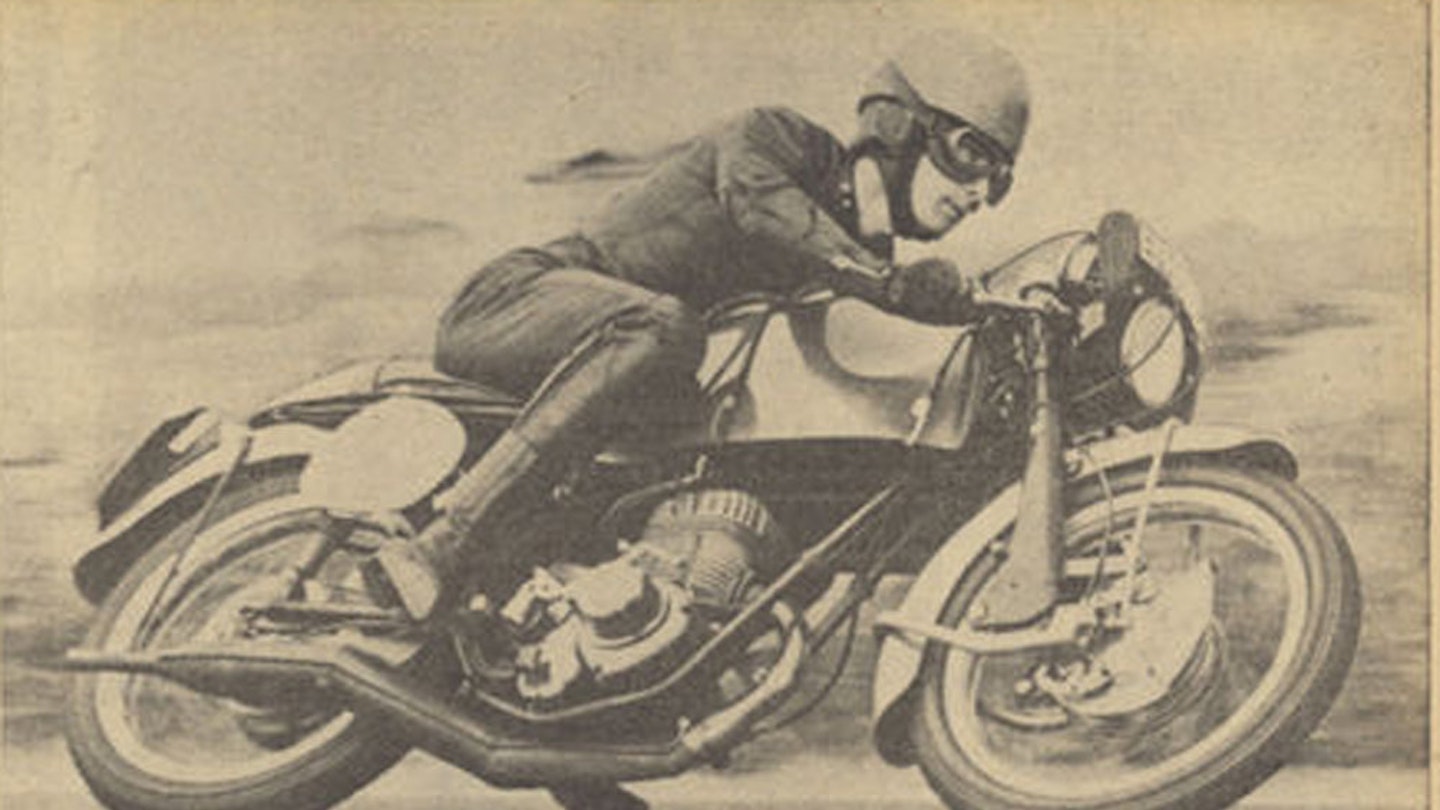In the mid-1960s Britain’s micro-factory motorcycle makers started producing the first British-built 250cc customer racing bikes since World War II. The Cotton Telstar, Greeves Silverstone, DMW Hornet and Royal Enfield GP5 were all two-stroke singles designed to let you buy and race.
But Cotton went one better – the Gloucester factory launched the Conquest, a barely-legal road version of the bike that had won the 250cc class in the 500-mile production races at Castle Combe in 1965 and Brands Hatch in 1966. It was every motorcyclist’s dream – a successful racing bike that could be registered for road use, giving racetrack power and handling softened just enough to cope with suburbia.
That was more or less the story with the Conquest. It used a Starmaker power unit from the Villiers factory in Wolverhampton, which specialised in making engines only and supplying them to companies that didn’t have the resources to design and manufacture their own power units. In Brands Hatch spec, with a 12.7:1 compression ratio, the Starmaker gave 25bhp and was linked to a close-ratio four-speed gearbox. It sounds like a nightmare – a high-geared twostroke with just four ratios – but the Conquest wasn’t too bad on the road.

The actual Brands winning bike came to MCN for road test, which was handled by Sean Wood, a staff writer and handy road racer who rode for the Greeves tuner Brian Woolley. But one weekend the Conquest lay neglected in the office garage, so I grabbed it and headed off for a road race meeting at Mallory. I was 24 years old, in a leather jacket and a pair of jeans, soaring free on the A47 with a pair of clip-ons in my hands and a five-gallon fibreglass fuel tank under my chest – I was in paradise.
Inevitably, you had to clutch-slip the Conquest around town. But once on the open road the Starmaker engine was a revelation; instead of having a razor-blade powerband, it issued a fat stream of torque from mid-range to the 7500rpm redline. I ripped along the A47’s straights and curves at 80-90mph, Cotton’s trademark leading-link forks giving stable handling. Threading through the paddock at Mallory, that red fuel tank and the racing numberplates drew looks – the Conquest was a trending machine in its day. Derek Minter, one of the racing greats of the ’60s, was the factory rider, and it was only a couple of weekends since two other short-circuit names, Peter Inchley and Reg Everett, had achieved the Brands success.
Bruce Main-Smith, one of the old-guard testers of the era, hailed the Conquest as the fastest 250 of its day after he thrashed it round the three-mile MIRA banked track at an average of 91.9mph. The previous best had been 86mph by a Honda Dream SS. Main-Smith estimated the Conquest’s top end at 105mph on a long straight.
Now the downsides. The Conquest made a real racket, had primitive lights and no centre or prop stands. It survived our 300-mile road test in one piece, but build quality was not a phrase you would associate with it. The Super Dream, on the other hand, was a fully equipped and civilised roadster. You had to be a committed buyer to shell out £370 (£6500 today) for a Conquest.
By the time of our 1966 test, Cotton had sold 185 Conquests, while the factory made more than 60 examples of its fullbore Telstar racer. Minter won the 1964 British 250cc championship on the works Telstar with 32bhp and a six-speed ’box. In 1966 Peter Inchley showed the potential of the Starmaker engine by finishing third in the Lightweight TT on a Villiers-built racer, beaten only by the Honda sixes of Mike Hailwood and Stuart Graham. It was the first time in 16 years that a British bike had claimed a 250cc TT podium.
Looking back, the era of the British micro-factories now seems quaint and romantic. Such scenes rarely last, and this one didn’t. By 1967 the Conquest was out of production, made irrelevant by better-made offerings from Japan. But does that test bike, EFH 565C, still exist? Are any Conquests still around, I wonder.
